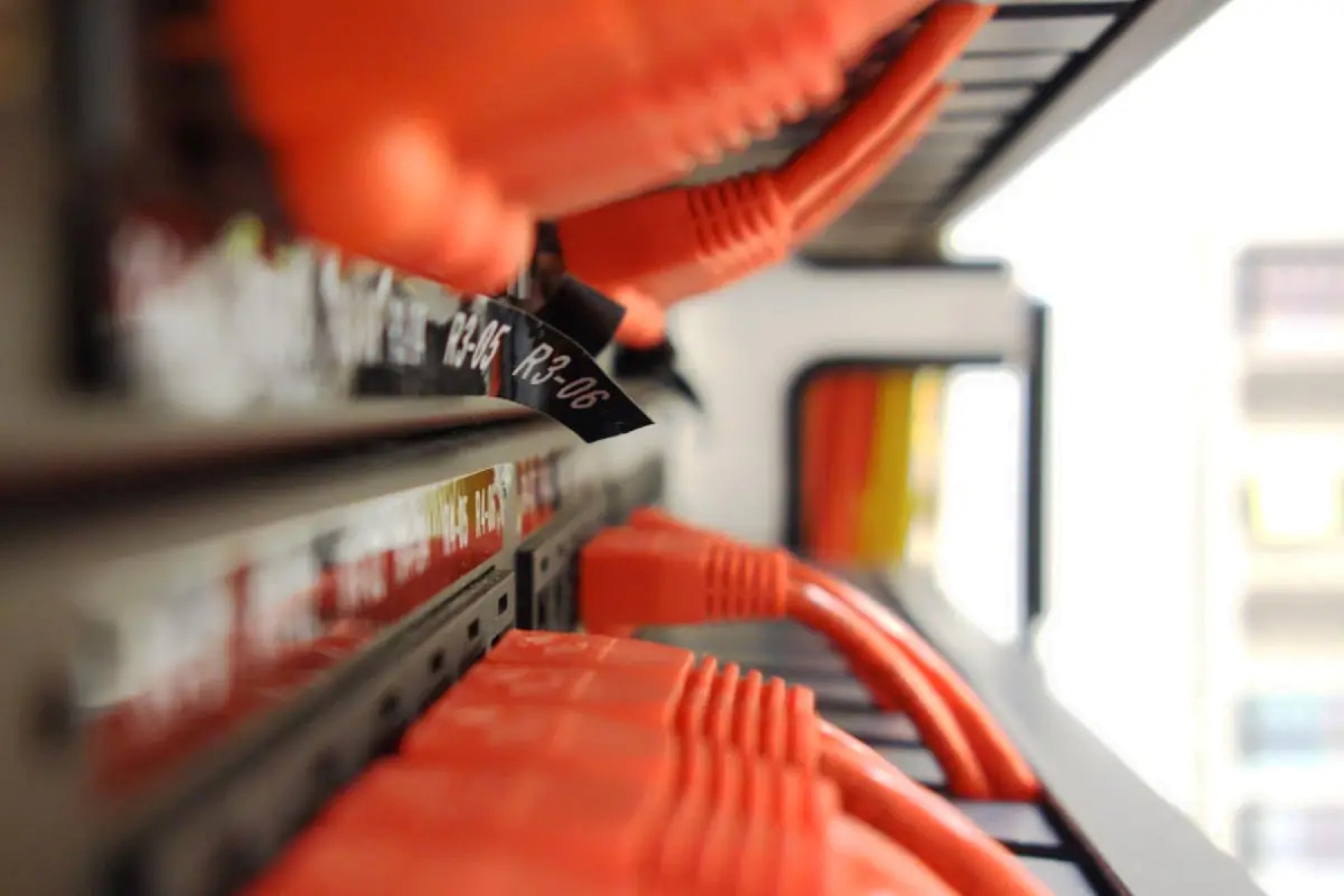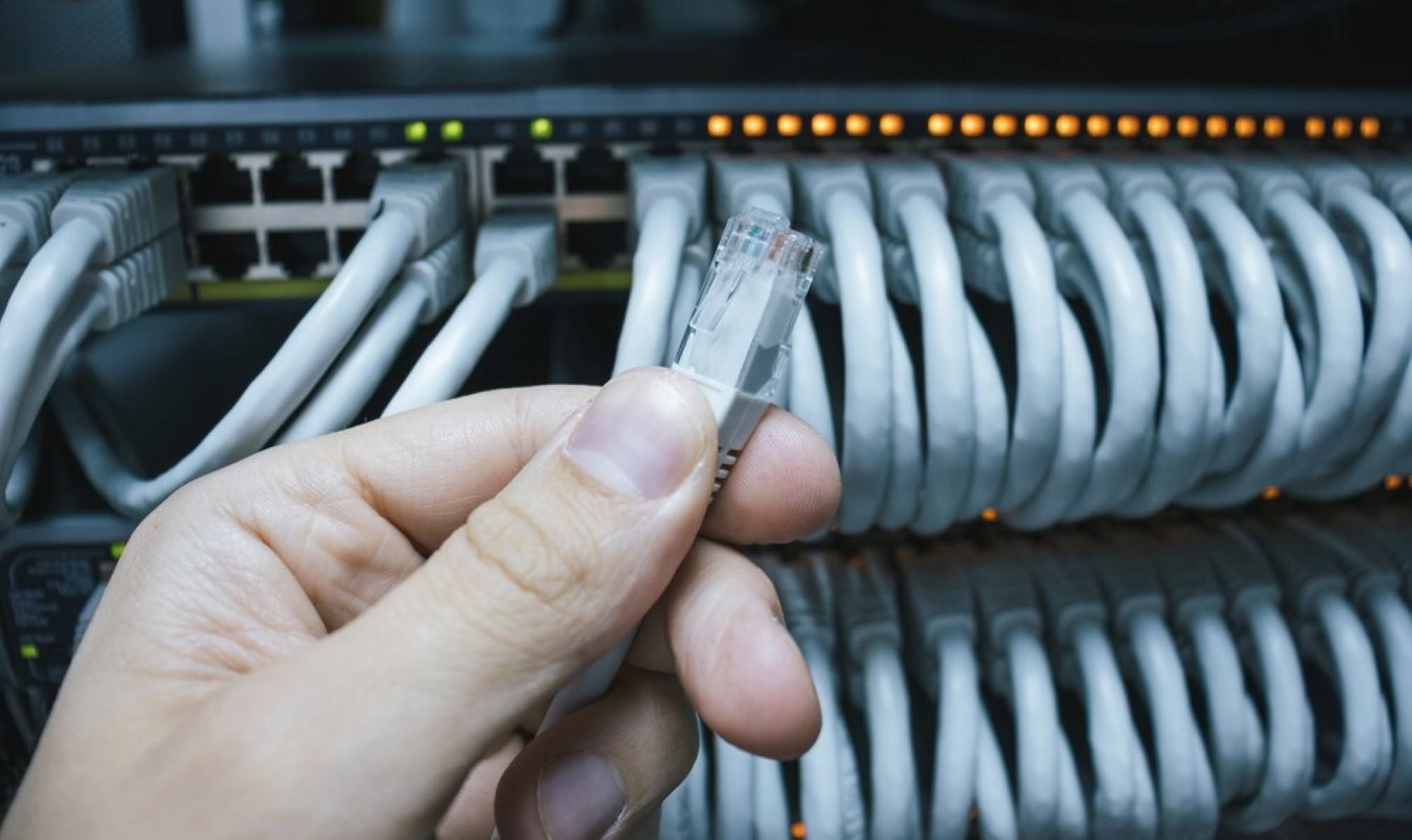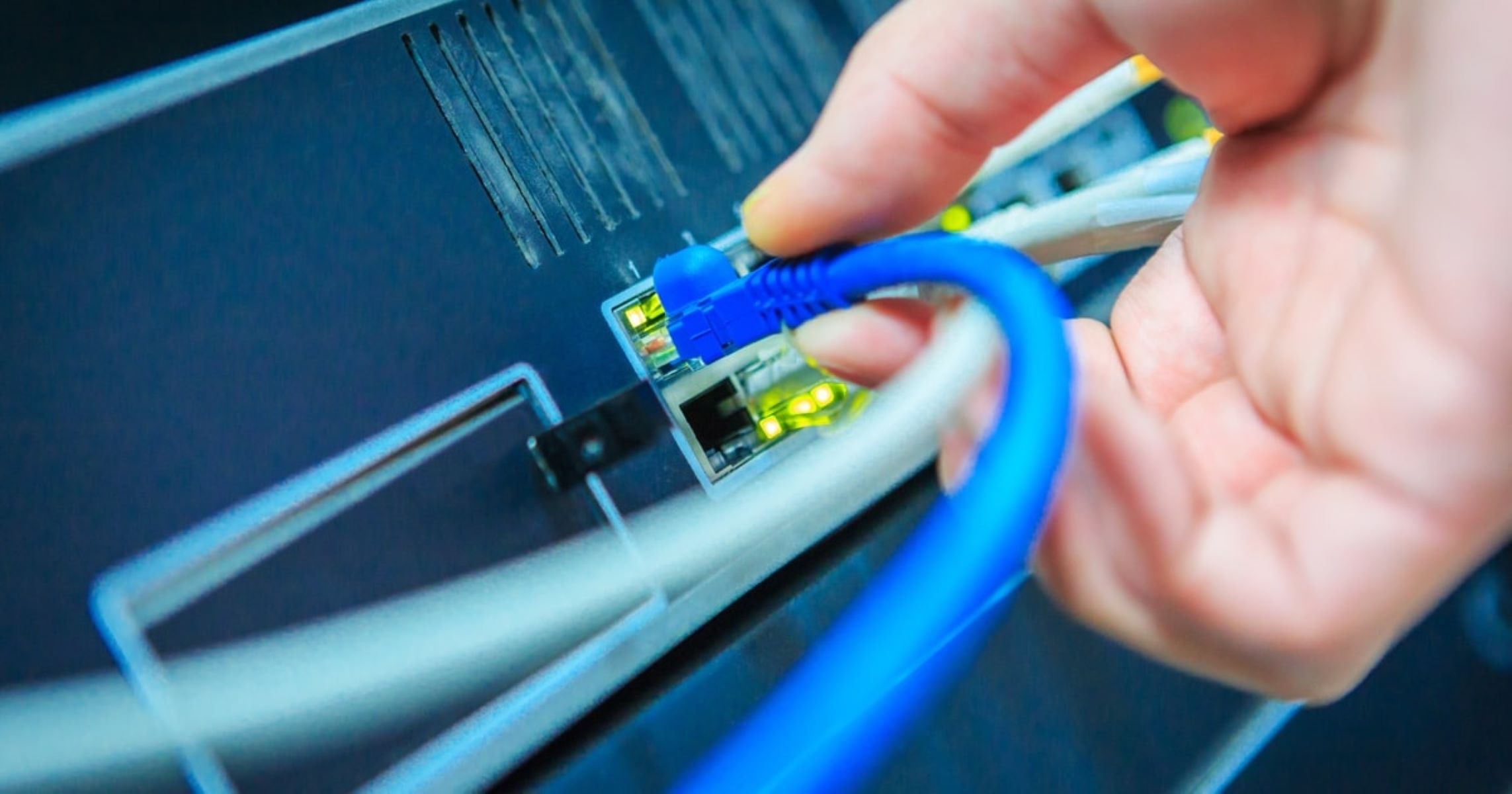Introduction
Welcome to the world of Ethernet frames! If you’re curious about the inner workings of computer networks and how data is transmitted, understanding Ethernet frames is essential. Ethernet frames play a crucial role in networking by packaging and delivering data across local area networks (LANs). In this article, we will delve into the fascinating details of what makes up an Ethernet frame and the purpose of each component.
Whether you’re a networking professional or simply someone with a curious mind, this article aims to provide a comprehensive overview of Ethernet frame structure and its various components. We’ll demystify technical jargon, break down complex concepts, and explore the inner workings of Ethernet frames in a way that is easy to understand.
By the end of this article, you’ll have a solid grasp of the anatomy of an Ethernet frame, including its header, information field, and frame check sequence (FCS). So, let’s embark on this educational journey together and unravel the mysteries of Ethernet frames!
What is an Ethernet Frame?
An Ethernet frame is the fundamental unit of data transmission in an Ethernet network. It is a structured data packet that contains the necessary information for transmitting data across a network. Think of it as a container that holds the data and all the necessary instructions for the network devices to handle and process the data.
At its core, an Ethernet frame serves as a vehicle for transmitting data from one network device to another. It encapsulates the data, adds necessary control information, and ensures reliable delivery to its intended destination.
Ethernet frames are used primarily in local area networks (LANs) and are the backbone of modern data communication. They enable devices such as computers, servers, switches, and routers to exchange information over the network with high speed and efficiency.
Despite the advancements in networking technologies, Ethernet frames remain a fundamental building block of network communication due to their simplicity, reliability, and widespread adoption.
Now that we have a basic understanding of what an Ethernet frame is, let’s delve into its structure and explore the different components that make up an Ethernet frame.
Structure of an Ethernet Frame
An Ethernet frame consists of three main components: the Ethernet frame header, the information field, and the Ethernet frame check sequence (FCS). Let’s explore each of these components in detail:
Ethernet Frame Header
The Ethernet frame header is located at the beginning of the frame and contains important control information. It includes the source and destination MAC addresses, which are unique identifiers assigned to each network device. These addresses help determine the source and destination of the data being transmitted.
The header also contains the EtherType field, which specifies the type of data carried in the frame. This field tells network devices how to interpret the information field of the frame, whether it carries an IP packet, an Address Resolution Protocol (ARP) request, or any other type of data.
The Information Field
The information field is the heart of the Ethernet frame, as it carries the actual data to be transmitted. It can vary in size and can contain anything from user data to control information, depending on the specific protocol and application being used.
The length of the information field is variable, allowing for the transmission of different amounts of data. The frame size, including both the header and the information field, can range from the minimum Ethernet frame size of 64 bytes to the maximum frame size, which is typically 1518 bytes.
Ethernet Frame Check Sequence (FCS)
The Ethernet frame check sequence (FCS) is a field located at the end of the frame. It is a checksum computed by the sender and used by the receiver to verify the integrity of the received frame. The FCS field allows the receiver to detect if any errors occurred during transmission and ensures the accuracy of the received data.
To compute the FCS, the sender performs a mathematical calculation on all the bits in the frame, including the header, information field, and other necessary fields. The receiver then performs the same calculation and compares the result with the received FCS value. If they match, it indicates that the frame was transmitted without errors.
The FCS plays a crucial role in ensuring the reliability of data transmission in Ethernet networks. If an error is detected in the FCS, the frame is typically discarded, and the sender may need to retransmit the data.
Now that we have examined the components that make up an Ethernet frame, we have gained a deeper understanding of its structure. In the next section, we will explore the Ethernet frame header in more detail.
Ethernet Frame Header
The Ethernet frame header is a vital component of an Ethernet frame. It is located at the beginning of the frame and contains critical information necessary for the network devices to correctly handle and process the frame. Let’s take a closer look at the different fields within the Ethernet frame header:
Source and Destination MAC Addresses
One of the key components of the Ethernet frame header is the source and destination Media Access Control (MAC) addresses. MAC addresses are unique identifiers assigned to network devices at the hardware level. They consist of six pairs of hexadecimal digits, separated by colons or hyphens.
The source MAC address indicates the network device that originally transmitted the frame, while the destination MAC address specifies the intended recipient of the frame. By examining these addresses, network devices can determine how to handle and forward the frame towards its destination.
EtherType Field
The EtherType field is a 2-byte field within the Ethernet frame header that specifies the type of data carried in the frame. It helps network devices understand how to interpret the information field of the frame.
For example, if the EtherType field value is 0x0800, it indicates that the information field carries an Internet Protocol (IP) packet. Similarly, if the value is 0x0806, it signifies an Address Resolution Protocol (ARP) request or reply. EtherType values can vary depending on the specific protocols and applications being used.
IEEE 802.1Q VLAN Tag (Optional)
In certain networking environments, VLAN tagging is used to segment a network into virtual LANs (VLANs) to improve network efficiency and security. The Ethernet frame header can include an optional IEEE 802.1Q VLAN tag field, which contains information about the VLAN to which the frame belongs.
The VLAN tag field includes a VLAN identification value, known as a VLAN ID, which helps network devices identify and process frames belonging to specific VLANs. This field enables the implementation of virtual LANs, which allow for the logical separation of network traffic.
The Ethernet frame header is crucial for the proper functioning of Ethernet networks. It provides essential information such as source and destination MAC addresses, along with the EtherType field for data interpretation. Optional fields like the IEEE 802.1Q VLAN tag further enhance the capabilities of Ethernet networks by enabling the segmentation of traffic.
In the next section, we will explore the information field, which carries the actual data within an Ethernet frame.
The Information Field
The information field is a crucial component of an Ethernet frame. It is the part of the frame that carries the actual data to be transmitted across the network. This field can vary in size, accommodating different amounts of data depending on the specific protocol and application being used.
The length of the information field determines the overall size of the Ethernet frame. The minimum Ethernet frame size is 64 bytes, which includes the header and the information field. The maximum frame size is typically 1518 bytes but can vary depending on the specific Ethernet standard or network implementation.
The contents of the information field vary depending on the nature of the data being transmitted. It can consist of user data, control information, or a combination of both. For example, in an IP packet, the payload of the packet would be included in the information field.
When transmitting data, the sender encapsulates the data within the information field of an Ethernet frame. This data is then extracted and processed by the receiving device at the other end of the network. The receiving device interprets the information contained within the information field based on the protocols and applications in use.
One important aspect of the information field is its flexibility. It allows for the transmission of various types of data, making Ethernet frames versatile and adaptable to different network requirements. This flexibility, combined with the speed and reliability of Ethernet networks, makes them the preferred choice for many applications.
It is worth noting that the information field may be padded in certain cases to meet the minimum frame size requirements. Padding involves adding extra bits or bytes to the information field to reach the minimum frame size. This is done to maintain the consistency of the frame size and ensure compatibility with network devices that may specify a minimum frame size for proper handling and processing.
The information field serves as the carrier for transmitting the actual data in an Ethernet frame. Its variable size and flexibility enable the transmission of diverse forms of information across the network. In the next section, we will explore the Ethernet Frame Check Sequence (FCS), which plays a vital role in ensuring data integrity during transmission.
Ethernet Frame Check Sequence (FCS)
The Ethernet Frame Check Sequence (FCS) is an important component of an Ethernet frame that ensures the integrity of the transmitted data. It is located at the end of the frame and serves as a form of error detection mechanism.
The purpose of the FCS is to allow the receiving device to verify that the frame was not altered or corrupted during the transmission process. It provides a way to detect errors such as bit flips, noise, or other issues that may have occurred during transmission.
The FCS is computed by the sender using a mathematical algorithm, typically a cyclic redundancy check (CRC). The sender performs a calculation on the entire Ethernet frame, including the header, information field, and other necessary fields. This calculation produces a unique value, known as the FCS, which is then appended to the end of the frame.
Upon receiving the frame, the receiving device performs the same calculation on the received frame, including the FCS field. It then compares the calculated FCS value with the received FCS value. If the two values match, it indicates that the frame was successfully transmitted without any errors.
If the calculated FCS does not match the received FCS, it indicates that the frame has been corrupted during transmission. In such cases, the receiving device discards the frame to prevent the transmission of erroneous data. The sender may need to retransmit the data to ensure reliable delivery.
The FCS plays a critical role in maintaining the accuracy and integrity of data transmission in Ethernet networks. By detecting errors, it helps to ensure that the data received at the destination matches the data sent by the source. This is particularly important in scenarios where data integrity is crucial, such as file transfers, voice over IP (VoIP), or video streaming.
It’s important to note that while the FCS is effective at detecting errors, it does not provide a mechanism for error correction. In cases where errors are detected, it is up to the higher-level protocols or applications to request retransmission or take appropriate measures to handle and recover from errors.
By incorporating the Ethernet Frame Check Sequence (FCS), Ethernet networks can achieve a high level of data integrity and reliability. This error detection mechanism contributes to the overall efficiency and robustness of Ethernet-based communication.
In the next section, we will wrap up our exploration of Ethernet frames while reflecting on the essential concepts covered throughout this article.
Conclusion
Understanding Ethernet frames is crucial for anyone involved in computer networking or anyone curious about how data is transmitted across networks. Ethernet frames serve as the building blocks of data communication in local area networks (LANs) and play a vital role in ensuring reliable and efficient data transmission.
In this article, we have explored the key components that make up an Ethernet frame, including the Ethernet frame header, the information field, and the Ethernet Frame Check Sequence (FCS). The Ethernet frame header contains important control information, such as source and destination MAC addresses and the EtherType field, which specifies the type of data carried in the frame.
The information field is where the actual data is carried within the Ethernet frame. It offers flexibility to accommodate different types of data, making Ethernet frames adaptable to various network requirements. The Ethernet Frame Check Sequence (FCS) ensures data integrity by providing error detection during transmission, allowing receiving devices to verify the accuracy of the received frame.
Ethernet frames remain a fundamental aspect of modern networking due to their simplicity, reliability, and widespread adoption. By understanding the structure and components of Ethernet frames, network professionals can troubleshoot network issues, optimize network performance, and ensure smooth data transmission.
As technology continues to advance, Ethernet frames will continue to play a vital role in networking, supporting the ever-increasing demand for faster and more efficient data communication. By staying informed about Ethernet frame structure and its components, we can navigate the intricacies of network communication with confidence and optimize the performance of our networks.
So, whether you’re a networking professional or just curious about how information travels across networks, having a solid understanding of Ethernet frames is an invaluable asset. By delving into the details of Ethernet frame structure, we gain a deeper appreciation for the inner workings of computer networks and the vital role Ethernet frames play in enabling seamless data communication.
With this newfound knowledge, you are equipped to explore, troubleshoot, and optimize Ethernet networks, making your network experiences more efficient and reliable.

























